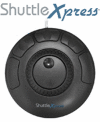Evaluating interaction techniques for stack mode viewing
- PMID: 18649069
- PMCID: PMC3043711
- DOI: 10.1007/s10278-008-9140-1
Evaluating interaction techniques for stack mode viewing
Abstract
Three interaction techniques were evaluated for scrolling stack mode displays of volumetric data. Two used a scroll-wheel mouse: one used only the wheel, while another used a "click and drag" technique for fast scrolling, leaving the wheel for fine adjustments. The third technique used a Shuttle Xpress jog wheel. In a within-subjects design, nine radiologists searched stacked images for simulated hyper-intense regions on brain, knee, and thigh MR studies. Dependent measures were speed, accuracy, navigation path, and user preference. The radiologists considered the task realistic. They had high inter-subject variability in completion times, far larger than the differences between techniques. Most radiologists (eight out of nine) preferred familiar mouse-based techniques. Most participants scanned the data in two passes, first locating anomalies, then scanning for omissions. Participants spent a mean 10.4 s/trial exploring anomalies, with only mild variation between participants. Their rates of forward navigation searching for anomalies varied much more. Interaction technique significantly affected forward navigation rate (scroll wheel 5.4 slices/s, click and drag 9.4, and jog wheel 6.9). It is not clear what constrained the slowest navigators. The fastest navigator used a unique strategy of moving quickly just beyond an anomaly, then backing up. Eight naïve students performed a similar protocol. Their times and variability were similar to the radiologists, but more (three out of eight) students preferred the jog wheel. It may be worthwhile to introduce techniques such as the jog wheel to radiologists during training, and several techniques might be provided on workstations, allowing individuals to choose their preferred method.
Figures










References
-
- Krupinski EA, Mincilla R, Sewell P, Steiner E, Widlus D: Value of image motion in detecting stenoses. Proceedings SCAR 10–11, 2006
-
- Mathie AG, Strickland NH. Interpretation of CT scans with PACS image display in stack mode. Radiology. 1997;203:207–209. - PubMed
Publication types
MeSH terms
LinkOut - more resources
Full Text Sources

